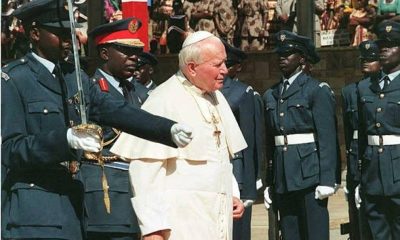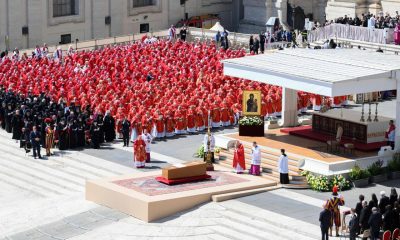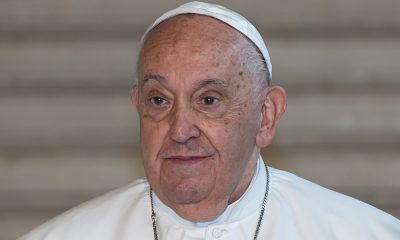World
What Happens When The Pope Dies?
The Vatican has now entered an interregnum period known as Sede Vacante—the throne of St. Peter is empty.
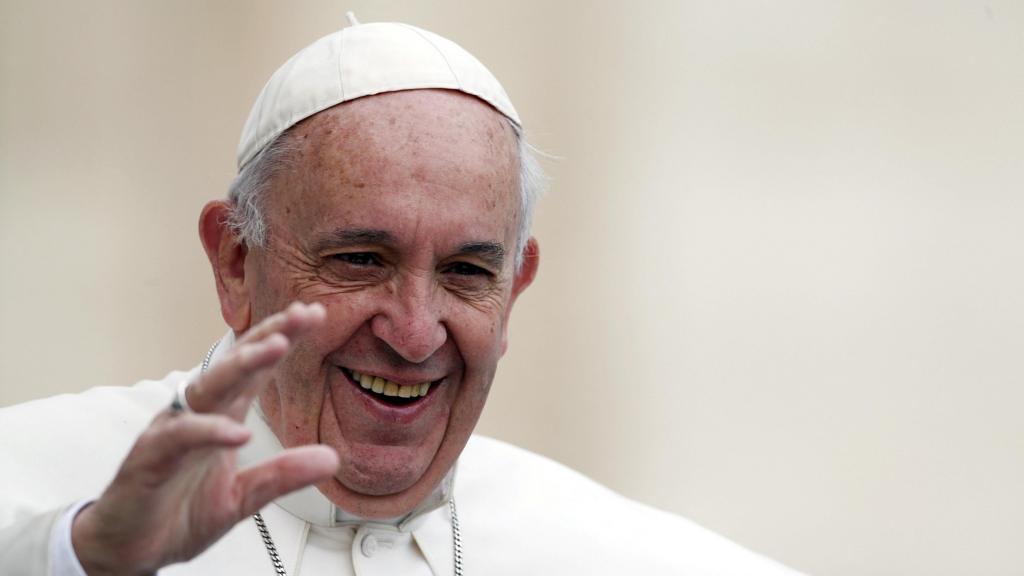
A papal funeral has traditionally been an elaborate affair, but Pope Francis recently approved plans to simplify the entire procedure.
Previous pontiffs were buried in three nested coffins made of cypress, lead, and oak.
Pope Francis has opted for a single, simple wooden coffin lined with zinc.
He has also eliminated the tradition of placing the pope’s body on a raised platform—known as a catafalque—in St. Peter’s Basilica for public viewing.
Instead, mourners will be invited to pay their respects while his body lies inside the coffin with the lid removed.
Francis will also be the first pope in more than a century to be buried outside the Vatican.
He will be laid to rest in the Basilica of Santa Maria Maggiore, one of the four major papal basilicas in Rome.
On Monday, the Vatican announced the death of Pope Francis, setting the stage for the selection of a new head of the worldwide Catholic Church.
A new pope is chosen under only two circumstances: the death or resignation of the current pope. Typically, the position of pope is a lifelong one, with rare exceptions.
There is no provision under canon law to remove a pope from office.
This has posed challenges in the past—for example, during the final months of Pope Saint John Paul II’s papacy.
He was gravely ill and incapacitated, but the College of Cardinals could not begin the process of conclave until after his death.
A doctor confirms the pope’s death, but only the Camerlengo (Chamberlain) can initiate the complex series of rituals that follow.
The Camerlengo serves as the Vatican’s overseer of property and revenues and is responsible for executing the protocols and organizing the funeral.
The current Camerlengo, Cardinal Kevin Farrell, will refer to a 400-page handbook titled Funeral Rites of the Roman Pontiff, which guides him through the strict protocols governing a papal funeral.
First, he will call out the pope’s baptismal name—Jorge Mario Bergoglio for Pope Francis—three times.
This was traditionally done to ensure the pope was deceased and not merely sleeping.
Only when there is no response does the Camerlengo confirm the official death.
The next step is the ceremonial destruction of the “Fisherman’s Ring.”
Also known as the Piscatory Ring, this is an official part of the regalia worn by the pope.
Historically, the ring served as the pope’s seal on official documents, and its destruction prevented misuse, such as forging documents.
Today, the act is purely symbolic and marks the end of the pope’s authority.
Finally, the papal apartments are sealed—a measure historically intended to guard against looting.
The public’s first indication of a pope’s death is the tolling of the mourning bell at St. Peter’s Basilica.
The bell rings once for each year of the pope’s life; it tolled 84 times for Pope Saint John Paul II in 2005.
In contrast, the bells remained silent in 2013 when Pope Benedict XVI’s papacy ended, as he resigned rather than passed away.
The Vatican has now entered an interregnum period known as Sede Vacante—the throne of St. Peter is empty.
Kenya Insights allows guest blogging, if you want to be published on Kenya’s most authoritative and accurate blog, have an expose, news TIPS, story angles, human interest stories, drop us an email on [email protected] or via Telegram
-

 Business1 week ago
Business1 week ago‘They’re Criminals,’ Popular Radio Presenter Rapcha The Sayantist Accuses Electric Bike Firm Spiro of Fraudulent Practices
-

 Business6 days ago
Business6 days agoIt’s a Carbon Trading Firm: What Kenyans Need to Know About Spiro’s Business Model Amid Damning Allegations of Predatory Lending
-

 Business5 days ago
Business5 days agoManager Flees Safaricom-Linked Sacco As Fears Of Investors Losing Savings Becomes Imminent
-
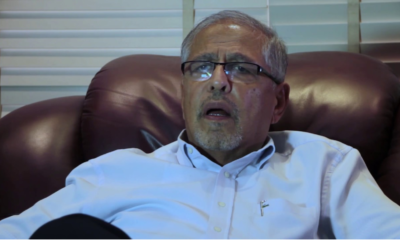
 News2 weeks ago
News2 weeks agoTemporary Reprieve As Mohamed Jaffer Wins Mombasa Land Compensation Despite Losing LPG Monopoly and Bitter Fallout With Johos
-
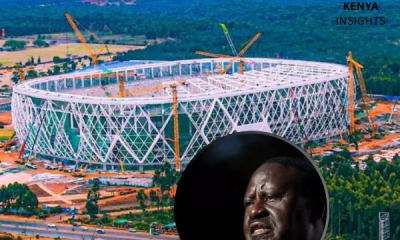
 Investigations1 week ago
Investigations1 week agoDisgraced Kuscco Boss Arnold Munene Moves To Gag Media After Expose Linking Him To Alleged Sh1.7 Billion Fraud
-
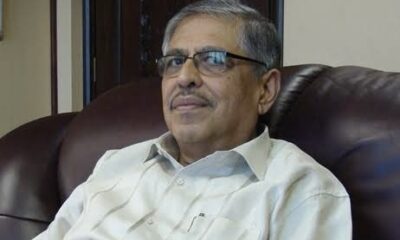
 News6 days ago
News6 days agoWoman Accused in High Defamation Blames AI As Case Exposes How Mombasa Billionaire Mohamed Jaffer Allegedly Sponsored Smear Campaign Linking Joho’s Family To Drug Trafficking
-

 Investigations2 weeks ago
Investigations2 weeks agoFrom Daily Bribes to Billions Frozen: The Jambopay Empire Crumbles as CEO Danson Muchemi’s Scandal-Plagued Past Catches Up
-

 Investigations1 week ago
Investigations1 week agoFraud: How Sh235 Million Donor Cash For Nyamira Residents Was Embezzled Through Equity Bank Under Governor Nyaribo’s Watch



